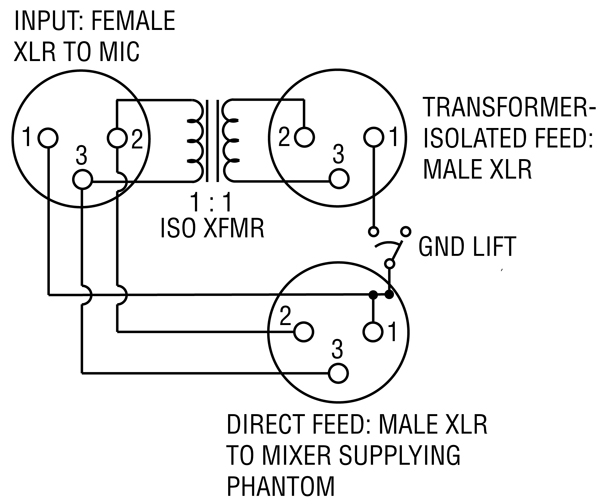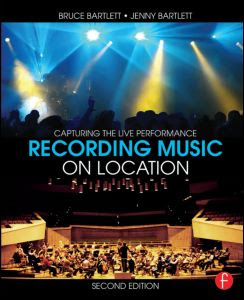Following is an excerpt from the just-released Second Edition of Recording Music on Location by noted LSI/PSW author Bruce Bartlett and Jenny Bartlett, published by Focal Press.
——————————-
Let’s consider a different way to make a multitrack recording. Plug each microphone into a mic splitter, which sends the mic signal to two destinations: the PA mixer and recording mixer. The splitter has one XLR input and two or more XLR outputs per mic.
Some splitters have a third output which goes to a monitor mixer, and a fourth output might go to a broadcast mixer. (In Chapter 1 we described transformer-isolated splitters and Y-cable splitters.)
Splitting the mics is the most expensive method, but is the most professional. It gives you and the PA operator independent control of each microphone’s recording level and signal flow.
Pros: Ultimate sound quality. Independent control at each mixer. Consistent sound.
Cons: Complicated. Expensive if transformer splitters are used.
Equipment: Mic splitters, maybe mic preamps, mic cables, mic snake, recording mixer and multitrack recorder or audio interface and laptop, mixer-to-recorder cables, headphones or powered monitors.
There are many advantages of splitting the mic signals. You use your own mic preamps, so you are not dependent on the quality of the PA console mic preamps.
Also, you are not hassling the operator about adjusting gain trims. Each mix engineer can work without interfering with the others. The FOH engineer can change trims, level, or EQ and it will have no effect on the signals going to the recording engineer.
Another plus: a splitter provides consistent, unprocessed recordings of the mic signals. This consistency makes it easy to edit between different performances.
What’s more, splitters let you use mic preamps on stage if you wish. That way, the cable from each mic to its preamp is short, which reduces hum and radio-frequency interference.
As shown in the illustration, connect the outputs from all the splitter channels to the PA snake and to your recording snake. Connect the recording snake to your recording mixer mic inputs.
This mixer is used to set up your own monitor mix and to set the recording levels. Connect the recording mixer’s insert sends to a multitrack recording system of your choice.
———————————————————
Whether you record in the local rock club, jazz café, or in an orchestra hall, the Bartletts offer sage advice on each stage of the process of location recording. The Second Edition of Recording Music on Location has been thoroughly updated and includes new sections on iOS devices, USB thumb-drive recorders, and digital consoles with built-in recorders, along with updated specs on recording equipment, software, and hardware. The book provides an exceptional collection of information regarding all aspects of recording outside of the studio, and is available from Amazon and Barnes & Noble.























